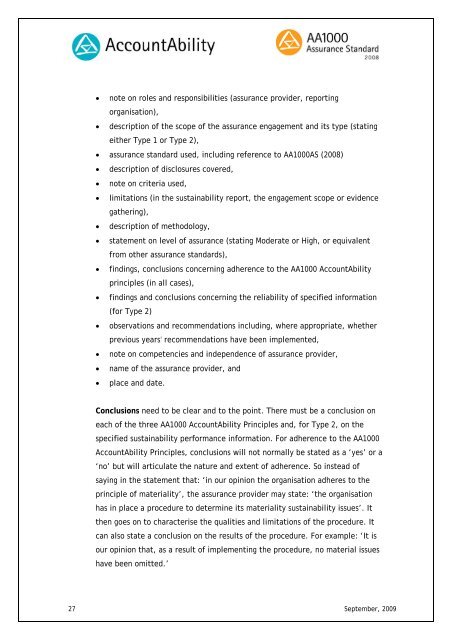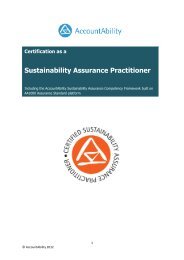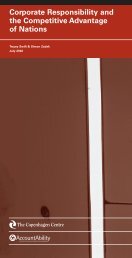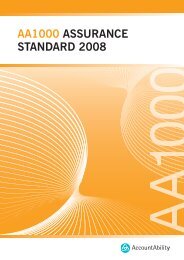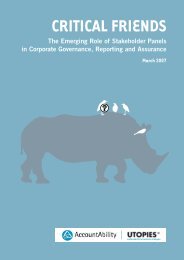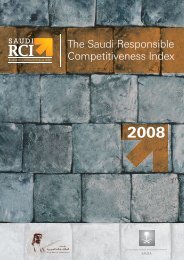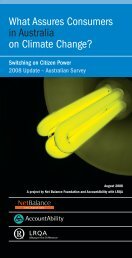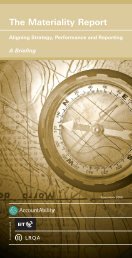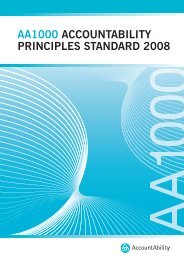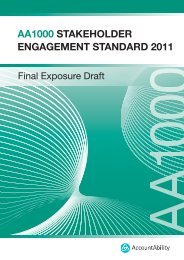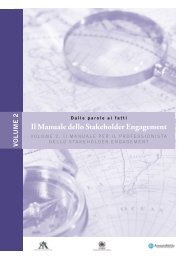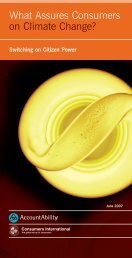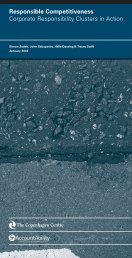Guidance for AA1000AS (2008) Assurance Providers - AccountAbility
Guidance for AA1000AS (2008) Assurance Providers - AccountAbility
Guidance for AA1000AS (2008) Assurance Providers - AccountAbility
Create successful ePaper yourself
Turn your PDF publications into a flip-book with our unique Google optimized e-Paper software.
• note on roles and responsibilities (assurance provider, reportingorganisation),• description of the scope of the assurance engagement and its type (statingeither Type 1 or Type 2),• assurance standard used, including reference to <strong>AA1000AS</strong> (<strong>2008</strong>)• description of disclosures covered,• note on criteria used,• limitations (in the sustainability report, the engagement scope or evidencegathering),• description of methodology,• statement on level of assurance (stating Moderate or High, or equivalentfrom other assurance standards),• findings, conclusions concerning adherence to the AA1000 <strong>AccountAbility</strong>principles (in all cases),• findings and conclusions concerning the reliability of specified in<strong>for</strong>mation(<strong>for</strong> Type 2)• observations and recommendations including, where appropriate, whetherprevious years' recommendations have been implemented,• note on competencies and independence of assurance provider,• name of the assurance provider, and• place and date.Conclusions need to be clear and to the point. There must be a conclusion oneach of the three AA1000 <strong>AccountAbility</strong> Principles and, <strong>for</strong> Type 2, on thespecified sustainability per<strong>for</strong>mance in<strong>for</strong>mation. For adherence to the AA1000<strong>AccountAbility</strong> Principles, conclusions will not normally be stated as a ‘yes’ or a‘no’ but will articulate the nature and extent of adherence. So instead ofsaying in the statement that: ‘in our opinion the organisation adheres to theprinciple of materiality’, the assurance provider may state: ‘the organisationhas in place a procedure to determine its materiality sustainability issues’. Itthen goes on to characterise the qualities and limitations of the procedure. Itcan also state a conclusion on the results of the procedure. For example: ‘It isour opinion that, as a result of implementing the procedure, no material issueshave been omitted.’27 September, 2009


